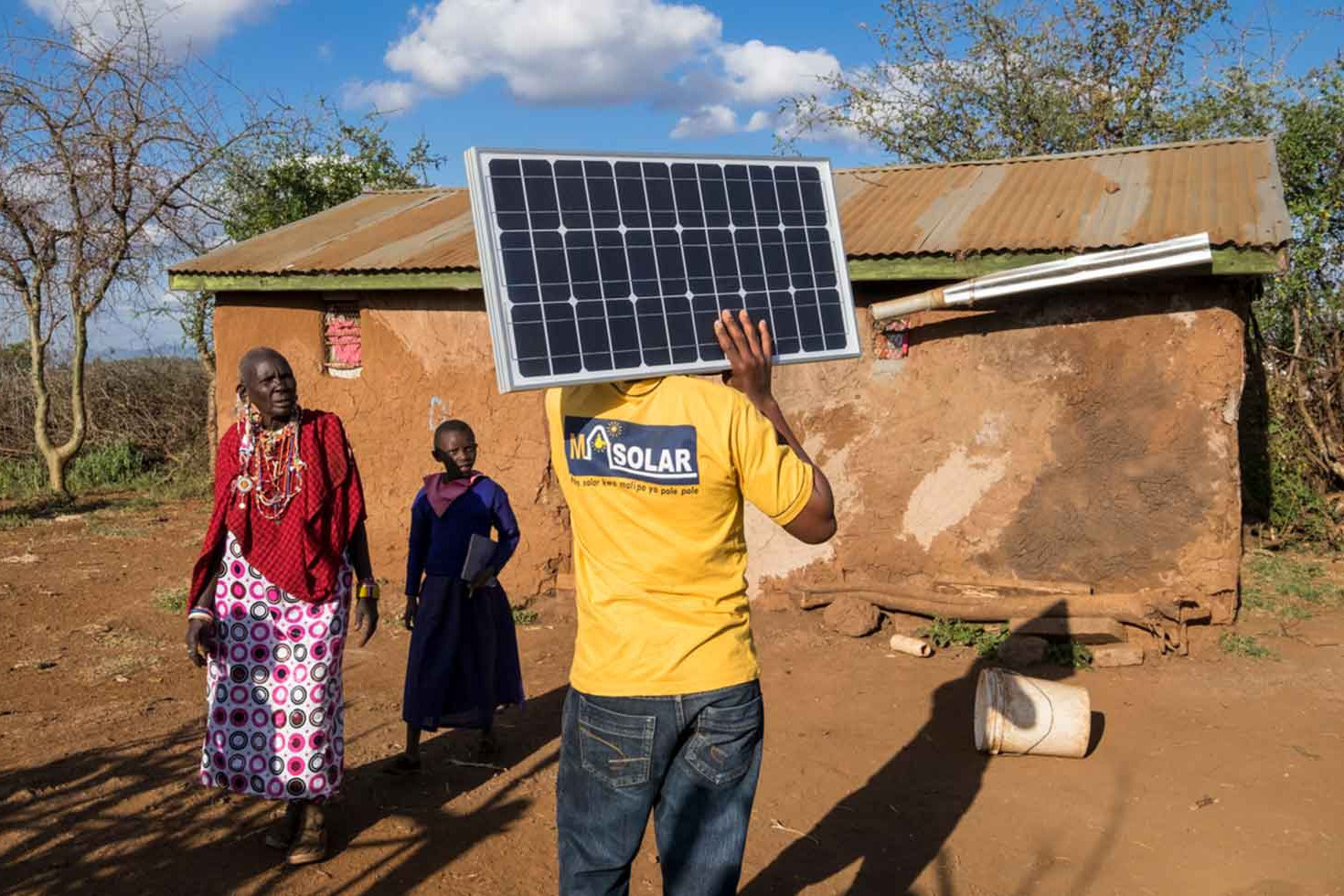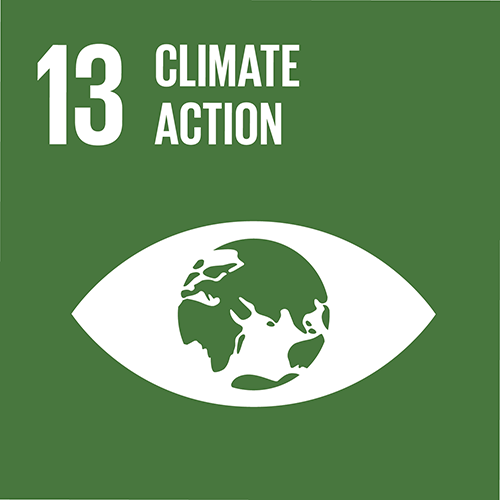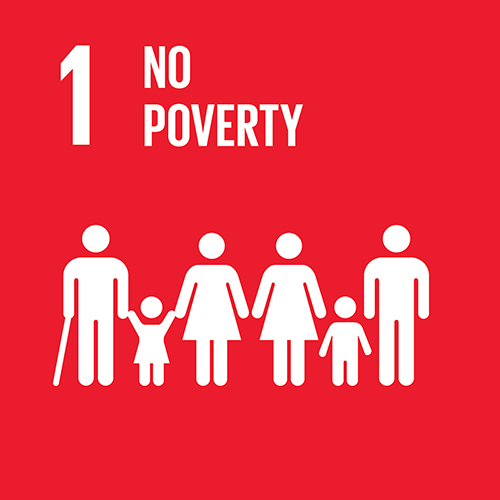Solar Panels for Education and Quality of Life in Ethiopia and Kenya

Project type: Solar
Project location: Ethiopia, Kenya
Project status: In operation, no credits available
Annual emission reduction of the whole project: 10'000 t
The installation of photovoltaic cells on the roofs of Ethiopian and Kenyan houses for electricity production gives families access to lighting and improves the livelihoods of people living in the rural regions of Ethiopia and Kenya. The use of solar lighting instead of kerosene lamps has positive effects on people’s health and leads to reductions of greenhouse gas emissions.
Note: The project in Ethiopia is completed, while the project in Kenya is ongoing.
Over 50 per cent of the population in the rural areas of Ethiopia and over 40 per cent in rural Kenya does not have access to electricity and therefore experiences numerous limitations at nighttime. Once the sun sets usually between 6 and 7 o’clock, the only source of light is a dim kerosene lamp producing health-hazardous smoke. Due to the lack of light, social time, housework and further any educational activities for the children are restricted in the evening. By substituting the poor kerosene lamps with strong solar powered LED lights, environmental, social and economical benefits can be achieved.
The light has enhanced security in my homestead. Our livestock used to be eaten by lions and hyenas, but now this light has really helped keep wildlife away. Lions and hyenas can’t attack my goats when there is solar light. They fear light, so they keep away.
International Solar Energy School: Education and training
The project supplies a high number of villages with Solar Home Systems to produce electricity for lighting at home. Education and training of local people is a key part of activities of the Solar Energy Foundation, the project partner of myclimate and project implementer. To have well-trained personnel available, who is able to professionally install and maintain the Solar Home Systems in Ethiopia and Kenya, the “International Solar Energy School” has been founded. After their graduation, five “Technicians” found a new Solar Center in a village and are responsible for the provision of its inhabitants with Solar Home Systems annually. Through this approach, many villages are reached and the know-how is spread around the country.
I have three girls in primary school and they are now able to do homework until 10pm at night. They also watch news on TV and play games. This has greatly improved their communication skills in English.
There are four different kinds of solar products offered differing in their power output and application. The solar lanterns and Solar Home Systems have been adapted and tested to fit the lives in rural Ethiopia and Kenya. To assure that every individual household finds a suitable lighting model for its needs and its financial situation, the small portable solar lanterns are sold directly by cash, where as the Solar Home Systems and other larger systems are sold by cash or credit and may be paid back over a specified period of time. The respective price takes into account the income level and ability to pay of the rural communities.
Four different kinds of solar products
There are four different kinds of solar products offered differing in their power output and application. The solar lanterns and Solar Home Systems have been adapted and tested to fit the lives in rural Ethiopia and Kenya. To assure that every individual household finds a suitable lighting model for its needs and its financial situation, the small portable solar lanterns are sold directly by cash, whereas the Solar Home Systems and other larger systems are sold by cash or credit and may be paid back over a specified period of time. The respective price takes into account the income level and ability to pay of the rural communities.
Project and implementation partner of myclimate
The project is developed and implemented by the above mentioned Solar Energy Foundation. It is a a not-for-profit organization specializing in the promotion of solar energy to remote off-grids households, schools, small-businesses and health clinics in rural Africa. The foundation work has won many awards from key donors such as the Ashden Awards (UK) and the Deon Foundation (Netherlands).
How is the money from the CO2 certificates used?
The carbon financing is invested in activities that support the training of customers, sales staff and technicians to ensure the proper use of the solar systems as well as efficient after-sales support and on-site maintenance. Experience shows that the proper use of the products by well-trained customers combined with efficient after-sales service is crucial for customer satisfaction and sustainability, as the systems remain functional over a longer period of time.
Yearly monitoring, reporting and verification (MRV)
The project is registered under the Gold Standard certification standard. The project is monitored annually and then verified and audited by an independent third party. These strict control mechanisms help to guarantee the highest possible quality of the projects, ensure the functionality of the solar modules and intervene at an early stage if repairs or additional training are required. This ensures that the emission reductions promised by the project materialise and that the project is successful in the long term. Further information can be found under "Documentations".
This project contributes to 7 SDGs*
*as at the end of 2024. Find out how myclimate reports these SDGs in our FAQ.
The following SDGs are verified by the Gold Standard:
141,696 persons benefit from reduced air pollution from kerosene fumes contributing to improved health
A solar home system increases children’s study time by 2 hours per day and therefore helps to improves school grades. Over 250 women, men and youth trained by the project locally.
The programme empowers women by providing green jobs and encouraging solar-powered businesses run by women. Over 31.8% of employees are women with equal opportunity to gain skills as men.
52,021 homes benefit from clean and efficient lighting and energy.
264 locals employed by the project (Kenya and Ethiopia)
A solar home system saves on average 411 kg CO₂ per year.
These SDGs have been approved by myclimate:
25,810 households have access to appropriate new clean and efficient technology, saving USD 68 and 77 liters of kerosene and USD 31 on mobile charging costs per household per year.
Situation without project
Use of kerosene lamps for lightingProject standard

Awards

Project number
7124




















